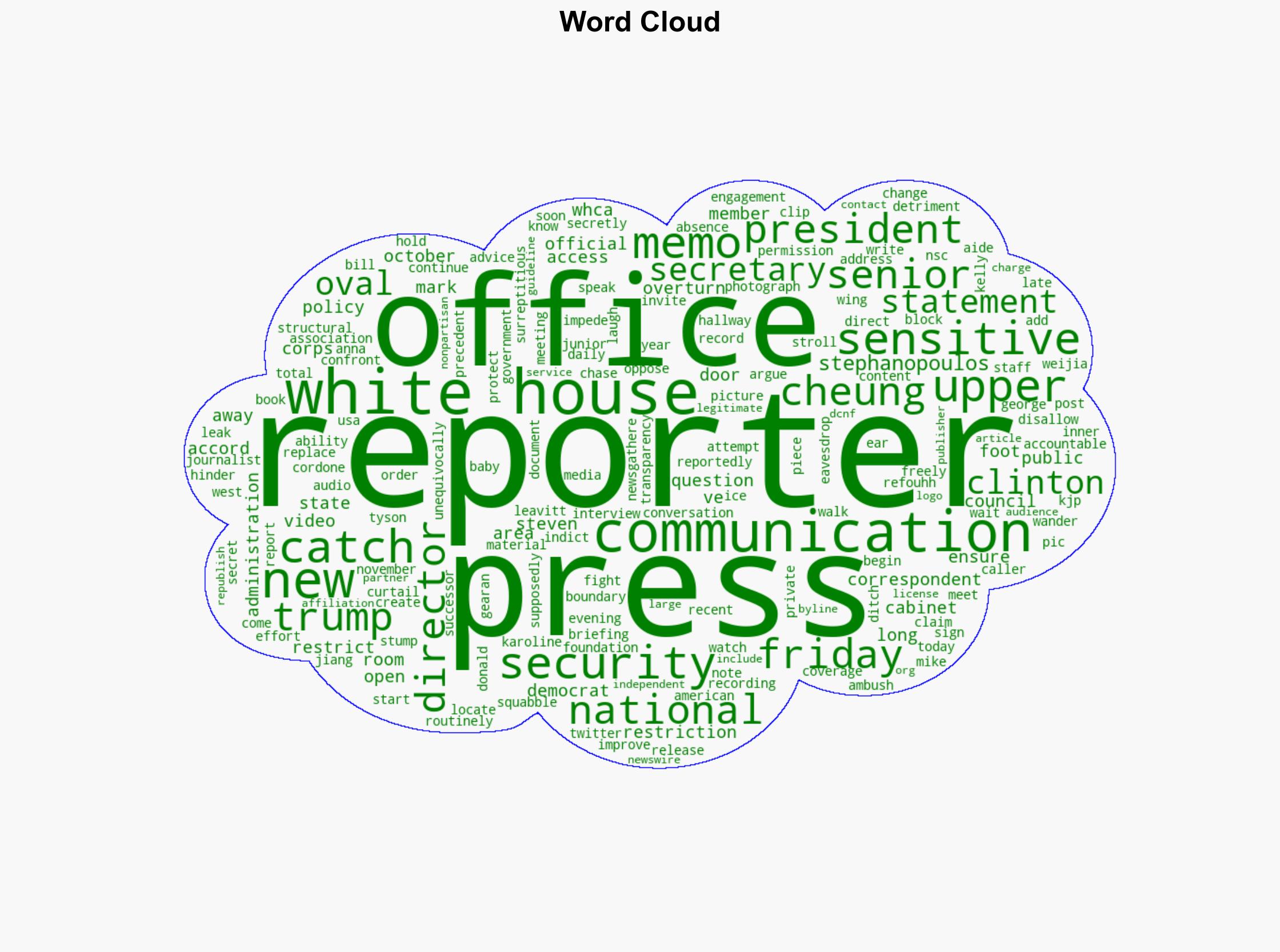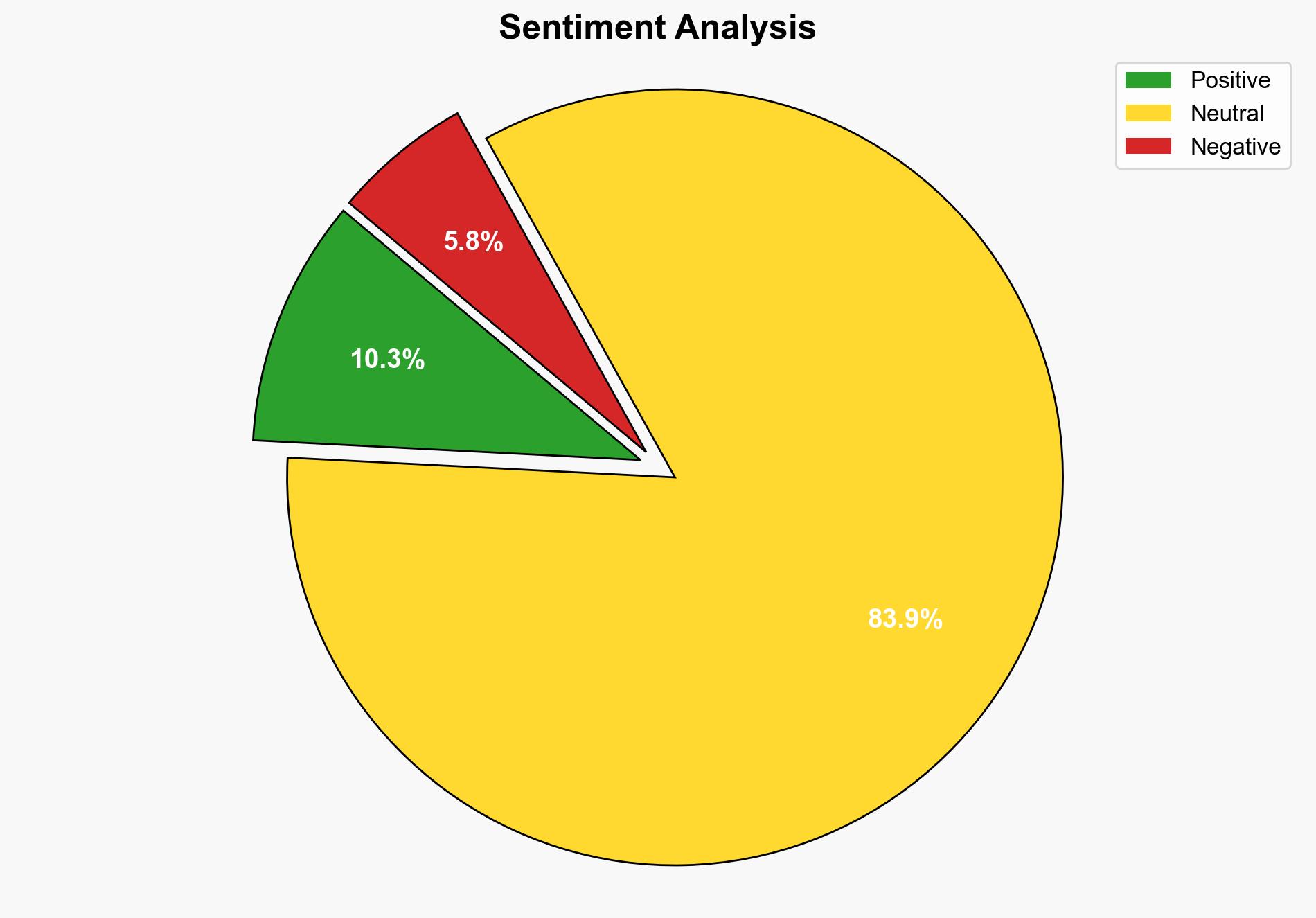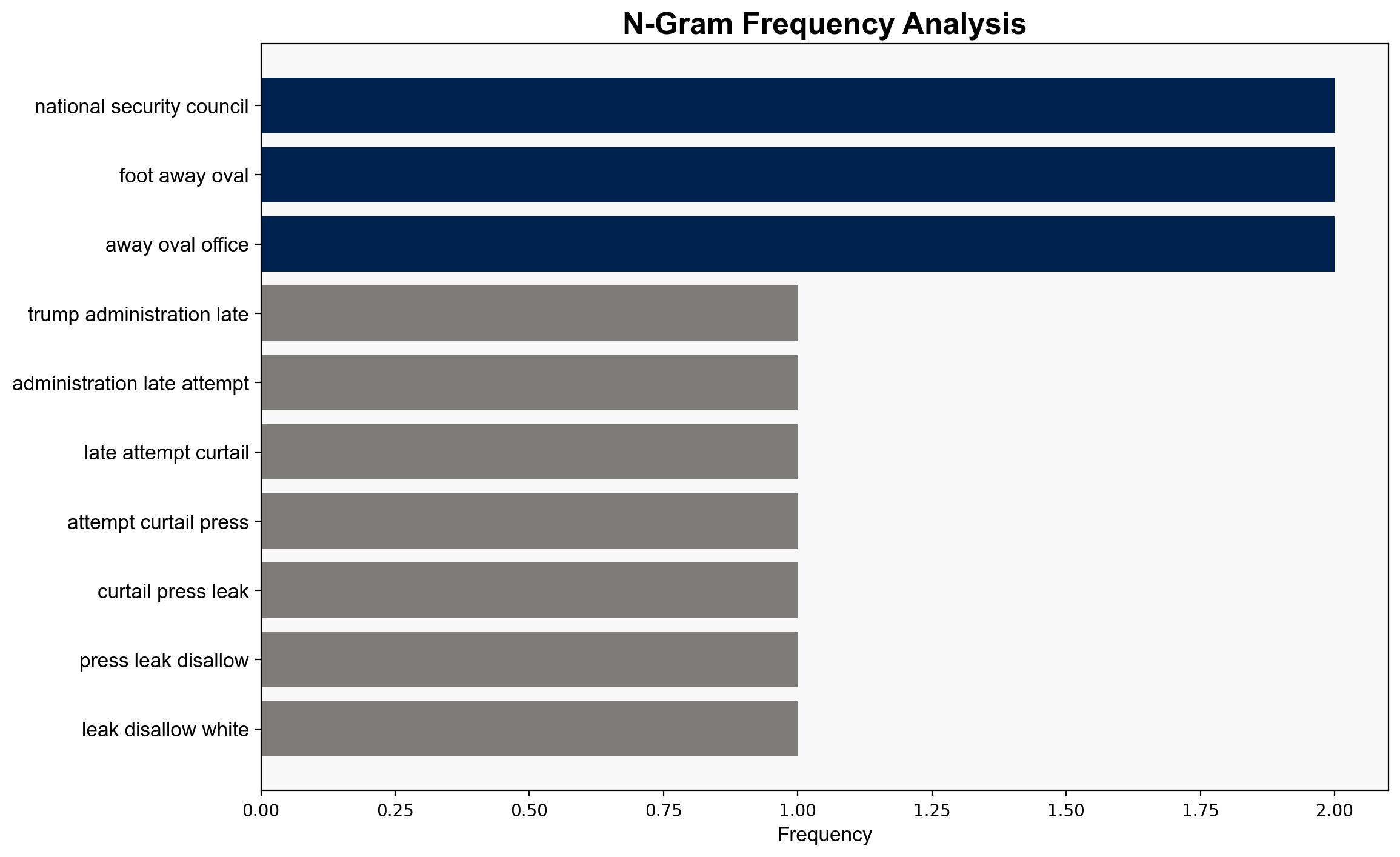White House Cordons Off Reporters From West Wing Communications Offices – The Daily Caller
Published on: 2025-11-01
Intelligence Report: White House Cordons Off Reporters From West Wing Communications Offices – The Daily Caller
1. BLUF (Bottom Line Up Front)
The strategic judgment suggests that the restriction of reporters’ access to the West Wing communications offices is primarily a security-driven measure, with a moderate confidence level. The most supported hypothesis is that this action is intended to protect sensitive information, as opposed to being a politically motivated attempt to control media narratives. Recommended action includes monitoring the situation for further developments and assessing the impact on media-government relations.
2. Competing Hypotheses
1. **Security-Driven Measure**: The restriction is primarily to safeguard national security by preventing unauthorized access to sensitive information and potential leaks.
2. **Political Control**: The restriction is a strategic move to limit media access and control the narrative surrounding the administration, possibly in response to negative coverage or leaks.
3. Key Assumptions and Red Flags
– **Assumptions**: The first hypothesis assumes that the primary motivation is security, not political control. The second hypothesis assumes a deliberate attempt to manipulate media access for political gain.
– **Red Flags**: Lack of transparency in the decision-making process and potential bias in reporting from sources like The Daily Caller could skew interpretation. The absence of direct statements from key individuals involved in the decision is notable.
4. Implications and Strategic Risks
– **Implications**: If the measure is security-driven, it may enhance protection of sensitive information but could strain relations with the press. If politically motivated, it risks backlash and accusations of undermining press freedom.
– **Strategic Risks**: Potential escalation includes increased media scrutiny and public distrust. There is also a risk of retaliatory measures from the press, which could lead to a more adversarial relationship.
5. Recommendations and Outlook
- Monitor media coverage and public response to assess the impact of the restrictions.
- Engage with media representatives to clarify the rationale behind the restrictions and mitigate potential backlash.
- Scenario Projections:
- Best: Improved security with minimal media backlash.
- Worst: Significant deterioration in media-government relations, leading to increased scrutiny and public distrust.
- Most Likely: Short-term media criticism with gradual adjustment to new protocols.
6. Key Individuals and Entities
– Donald Trump
– Steven Cheung
– Karoline Leavitt
– Weijia Jiang
– George Stephanopoulos
7. Thematic Tags
national security threats, media relations, information security, political strategy




